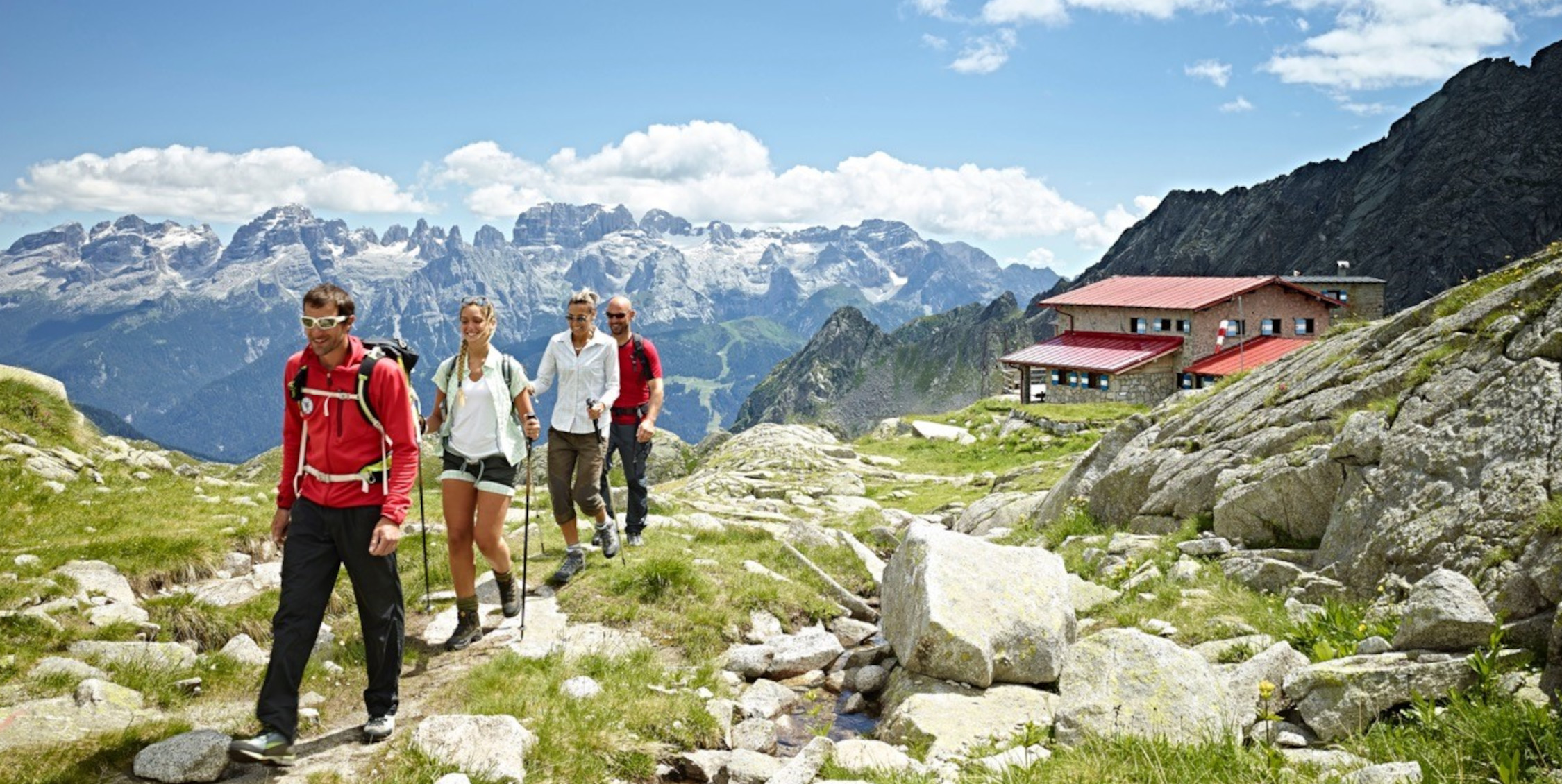The initial assessments of the National Alpine Rescue Corps in the Dolomites provinces already confirm the trend of recent years; the number of mishaps linked to physical unpreparedness, underestimation of routes, lack of adequate equipment and careful planning is very high. One example of how all stakeholders in the high-altitude community can work together for a single purpose comes from Trentino, with the #takecareinthemountains project.
Not the ten commandments you’re used to…
The UNESCO Dolomites Foundation, the Trentine Mountain Hut Managers Association, S.A.T. (Tridentine Alpinists Society), Alpine Rescue and Trentino Alpine Guides organised the #takecareinthemountains project, which started in the field with a day dedicated to the direct training of participants at various Trentino mountain huts at the beginning of the season (on 12 June). In the Noi Dolomiti UNESCO report, you can follow the story of the trekking and planning event, which took place in Val Canali on the way to the Treviso mountain hut. It was a collective effort aimed at reaching hikers with a unified, shared message. There are now also four quick guides for trekking, climbing, the via ferrata climbing routes, and snow or ice excursions available to people who come to the mountains.
But there are ten commandments!
Of course, we cannot neglect the basic rules, explained simply; first and foremost is the invitation to always use equipment appropriate to the elevation and season and to follow the advice of the people who live and work in and for the mountains.
Here are the ten golden rules:
- Study the route carefully before setting off.
Pay attention to and record the correct paths to take, especially at junctions, and assess possible rest stops along the route where you can stop for a break. If you can, download the route so you can consult it offline.
- Respect the environment; choose a route suited to your training.
When hiking in the mountains, remember to leave your destination clean. Also, when setting off, take the length, difference in elevation and any technical difficulties into account.
- Choose suitable equipment and gear.
If you go trekking, technical boots, a water bottle, rain jacket, food, a torch and a first aid kit are absolutely essential. If you do a via ferrata or other climbing activities, don’t forget the appropriate technical equipment.
- Check the weather reports,
especially the local ones, where you can find more specific information. This advice is especially important if you are tackling a via ferrata; make sure the weather is stable before setting off.
- It’s better to go in a group or with a partner,
so you can help each other if you run into difficulties. In the mountains, even a simple sprain can become a huge problem if you are alone.
- Let someone know about your itinerary.
Tell friends, family or mountain hut managers which route you intend to take and your estimated time of return. This information could be crucial in an emergency.
- Put your trust in an alpine professional.
Alpine guides, mountain hut managers or medium mountain guides are excellent sources for obtaining useful information on the environmental conditions of mountain routes.
- Pay close attention to signposts along the route,
including both the signs indicating the paths (number and destination) and the other signs along the route, as well as the red and white markings. Always remember to bring a map of your route (paper or digital) with you.
- Don’t hesitate to retrace your footsteps.
If fatigue sets in, if you have doubts about the route or if the weather turns nasty, it is better to turn back along the road you already know, rather than risk continuing.
- In the event of an accident, call 112.
When you call, remember to provide information on the exact location of the accident, the activity carried out, the number of people involved and their conditions, the weather conditions and the telephone number from which you are calling.


